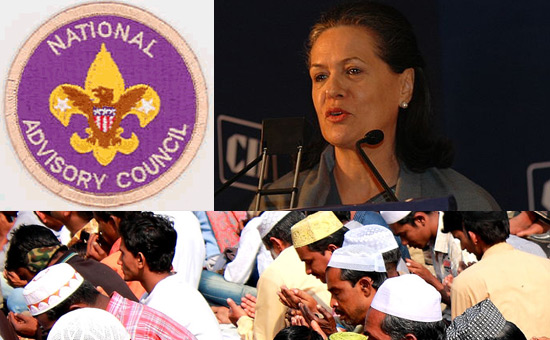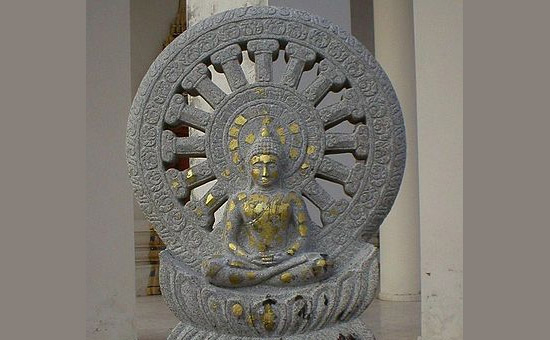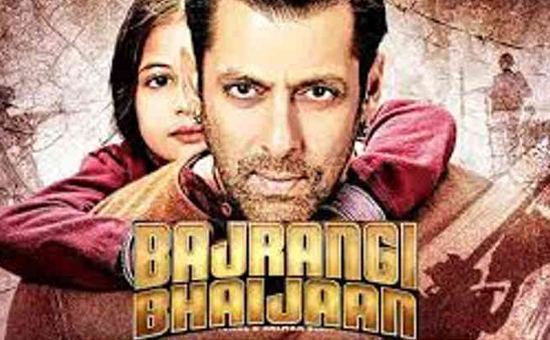- Hindus faces multiple and grave challenges today. (The term Hindu includes followers of Indian religions i.e. Hindus, Buddhists, Jains and Sikhs.) The article has three parts. One, how should we redefine our identity and change thinking. Two, how can be practice and promote Dharmic values. Three, is a survey report on Bollywood’s pro-Pakistan tilt. Hope the article provokes thought.
1 Redefine Hindu identity and Change thinking
Foreign invaders and academicians have largely defined our identity. Author and mythologist Devdutt Pattanaik wrote, “Most understanding of Indian thought today is derived from the works of the 19th century European
Orientalists, 20th century American academicians, and the writings of Indians that tend to be reactionary, defensive and apologetic.” 1
Devdutt adds, “Thus India, especially Hinduism finds itself increasingly force-fitted into a Western religious framework with a definitive holy book (Bhagavad Gita), a trinity (Brahma, Vishnu and Shiva), a set of commandments (Manu Smriti), its own Latin (Sanskrit), a Protestant Revolution (Buddhism vs. Hinduism), a heretical tradition (Tantra), a class struggle (caste hierarchy), a race theory (Aryans and Dravidians), an authoritarian clergy who need to be overthrown (Brahmins) etc.”
Here are eight ideas on how we can think differently.
1. Hindu and Hinduism vs.
Dharma
Scholar and ex-President Dr S Radhakrishnan wrote: “The people on the Indian side of the Sindhu were called Hindu by the Persian and the later western invaders. The term ‘Hindu’ according to Dr Radhakrishnan had originally a territorial and not a creedal significance.” This definition was apt
till the Muslim invasion. Later the invaders used the term Hindu to refer to
original residents and became a label to distinguish the locals from the
invaders i.e. Muslims.
Pandit Rajmani Tugnait, Spiritual
head of the Himalayan Institute and disciple of Swami Rama, wrote, ‘As part of their divide and rule policy the British used the words Hindu and Hinduism, emphasising the religious and political overtones of these words. Western writers then adopted these, and Eastern writers conformed to the norms set by those in power.’ 2
Thus, the Followers of Dharma, (Hindus,
Buddhists, Jains and Sikhs) became followers of independent religions.
However, the word ‘Hinduism is not representative of the original word ‘Sanatana Dharma’ which means ‘the Eternal or Universal Dharma’. Sanatana refers to eternal truths that manifests in ever-new names and forms. Author and speaker Rajiv Malhotra wrote, “Dharma means that which upholds or what without which nothing can stand or that which maintains the stability and harmony of the universe.” 3 Sanatana means
perennial, referring to eternal truths that manifests in ever-new names and
forms.
Similarly Jaina
became Jainisn. Munisri
Nyayavijayaji wrote, “The term ‘Jaina’ is derived from the term ‘Jina’. And the term ‘Jina’ is the common name for the supreme souls who are totally free from all the feelings of attachment, etc that defile the soul. And devotees of Jina are called Jaina’. 4 So also Sikh became Sikhism. The word Sikh (Hindi word is ‘seekhana’ to learn. Adjective - Sikhi) is derived from the Sanskrit word ‘Shishya’ meaning student.
Note
no school of Indian philosophy is called Hindu as we shall read later.
Action: Say we are followers of ‘Sanatana Dharma’.
DHARMA UNITES,
RELIGION DIVIDES.
2. Philosophy vs. Darshana
Pandit Tugnait wrote, “The Sanskrit word for philosophy is darshana, which means direct vision. The words symbolize the difference between modern Western philosophy, which mainly relies on intellectual pursuit and Indian philosophy that relies on direct vision of truths and pure Buddhi (reasoning).”
India
has nine darshanas or schools of philosophy Nyaya, Vaisesika, Samkhya, Yoga,
Mimamsa, Vedanta, Carvaka, Jaina and Buddhist.
Pandit Tugnait wrote, “The common characteristics of Indian Philosophy are direct experience, practicality, acceptance of authority, unbroken flow and stability, harmony amongst schools, parallel growth and co-existence of so many schools, open mindedness, support of logic and reasoning, belief in eternity, the law of karma, moral and ethical teachings, acknowledgement of suffering, thoroughness, and holistic approach.”
To
get a sense of how the West has influenced us Munisri Nyayavijayaji wrote Jaina Darshana in Gujarati. When translated into English it became
Jaina Philosophy & Religion.
Action: Focus
on what unites the more prevalent schools of Yoga, Vedanta, Jaina and Buddha.
3. Rights vs. Duties
The Indian Constitution and Courts focus more on ‘rights’.
The "Rights" approach is what Western institutions use to force their ideologies on India. The Bhartiya way has emphasises duties over rights.
Maharshi Aurobindo said, “It has been said that democracy is based on the rights of man; it has been replied that it should rather take its stand on the duties of man; but both rights and duties are European ideas. Dharma is the Indian conception in which rights and duties lose the artificial antagonism created by a view of the world, which makes selfishness the root of action, and regain their deep and eternal unity.” 5
Action: Focus on Duty not rights.
4. Non-translatable Sanskrit words e.g. Brahman vs. God
In book ‘Being Different’ Rajiv Malhotra wrote, ‘Many Sanskrit words are just not translatable. This non-translatability of key Sanskrit words attests to the non-digestibility of many Indian traditions.” For e.g. Brahman and God.
Malhotra adds, “The word Brahman come from the root brih, which means ‘to expand’. The all-expansive ultimate reality which creates all, lives in all, ad transcends all is Brahman. To translate it a ‘God’ in the Judeo-Christian sense diminishes its meaning. The ‘God’ whom Moses saw on Mount Sinai and from whom he received the stone tablets is not remotely the same as Brahman.”
Action: When a Sanskrit word does not have a corresponding and representative English one use the Sanskrit word.
5. India/Hindustan vs.
Bharat
The Constitution uses
India in English and Bharat in Hindi as names of our country.
However, many use ‘Hindustan’, not knowing it means ‘Urdu speaking areas of the Indian sub-continent’ and excludes substantial parts of India.
Conversely the word Bharata
i.e. Bha means light and knowledge
and rata means devoted. Bharata means
devoted to light as against darkness.
Bharata is also the name of ancient King and the eldest son of Rishabhdev,
the first Jain tirthankara and brother of Bahubali.
Action: Use the word ‘Bharat’ in English and Hindi.
Having
read about some fundamental and spiritual differences between Followers of
Dharma and the West let us now review legal and practical aspects.
 Minorities in India
Minorities in India
6.
Who is a Minority?
The Indian Constitution does not define the word "minority". It also does not specify a population percentage beyond which a community ceases to be a minority.
According to a Supreme Court judgment of August 2005, “Minority as understood from the constitutional scheme signifies an identifiable group of people or a community who are seen as entitled to protection due to deprivation of its religious, cultural and educational rights by other ‘majority’ communities. Majority here refers to a group or community that is likely to gain political power in elections under a democratic form of Government”.
However, minority has now come to imply every community that has a
population which is less than the majority community. The underlying rationale
is:
One, minorities deserved protection of their
rights from the majority community. Two,
the Hindu community is a monolith, which voted solely on religious
lines. Three, Hindus
would force non-Hindus to assimilate into Hindu culture.
These assumptions are flawed.
First, the Hindu society is
not a monolith because it is not governed by the equivalent of a Holy Book and
a Church.
Two, by its very nature,
Santana Dharma allows others to assimilate into its culture. Over the
centuries, it has absorbed numerous aspects of alien cultures and made some of
them its own.
Three, hundreds of years
ago, Hindus gave refuge and untrammelled rights to communities that were
persecuted elsewhere, like Parsis, Jews and Syrian Christians.
Four, during the last
60-odd years, we have seen that the Hindu does not vote on religious lines, but
for example, on performance, ethnicity, caste and locality.
Another practical example to make this point. If there is a fight
between a Hindu and Muslim and a Hindu messages 200 Hindus seeking support, may
be 20 might come. Conversely, at least 175 Muslims will respond to a similar
call.
Thus the fear of domination, as it happens in countries and Indian
states with Christian and Muslim majority populations, is misplaced. A look at
the population growth (Table 1) reiterates this point.
Table 1: Population Comparison 1951 and 2011 (numbers in Crores)
|
Community
|
1951%
|
2011*
|
Population Growth %
|
|
FoD@
|
31.49
|
100.00
|
318
|
|
Muslims
|
3.77
|
17.22
|
456
|
|
Christians
|
.84
|
2.78
|
330
|
|
Others
|
|
1.08
|
|
|
TOTAL
|
36.10
|
121.08
|
|
@Hindus, Buddhists, Jain and Sikhs. %Religious Demography of India 2003 edition *Census
Would the Muslim population grow by 456% if it were oppressed?
At 17.22 crore, the Muslim population in India exceeds the population (2016
figures source Google) of many countries namely UK 6.56 crs, Germany 8.27 crs,
Iran 8.03 crs. Only population of Muslim majority Pakistan 19.32 crs and
Indonesia 26.11 crs are higher.
How can a population of over 17 crore be construed to be a minority?
Also the
Christian population is understated. Activist John Dayal wrote, “According to the 2001 Census, Hindus constitute 80.5 percent of the population which was 1.02 billion at that time (Census 2011: 1.21 billion). Christians constituted 2.3 percent. However, no one believed the official figures. The Catholic Church, Protestant groups and particularly the Pentecostal churches collectively claim a total figure that may be two or three times the official Census numbers. 6
What the
founding fathers missed is that Sanatana Dharama is about Vishwadharma, the essential unity of
creation, the oneness principle, and the compassionate universe! And is unlike
Christianity/Islam where there is one prophet, only one way.
Action: Question colonial
concepts. Economic status should be the basis for all government sponsored
schemes.
7. Followers of Dharma and Indian Laws
Article 25 (Right to Freedom of Religion) reads, "In sub-clause (b) of clause (2), the reference to Hindus shall be construed as including a reference to persons professing the Sikh, Jain or Buddhist religion, and the reference to Hindu religious institutions shall be construed accordingly."
Thus Sikhs, Buddhists and Jains were treated as part of the wider Hindu community which has different sects, sub-sects, faiths, modes of worship and religious philosophies. In various codified customary laws like the Hindu Marriage Act, Hindu Succession Act, Hindu Adoption and Maintenance Act etc., the definition of "Hindu" included all sects, sub-sects of Hindu religion including Sikhs and Jains.
Sikhs were considered a minority sometime after the very violent
Khalistani Movement. The Congress declared Jains a minority before the May 2014
general elections.
Here are certain interesting paradoxes –
One, Sikhs are a
majority in Punjab yet wish to be considered a minority. The petition to be
declared a minority in Punjab was turned down by the Punjab and Haryana High
Court. The matter is pending before the Supreme Court for over two years.
Two, under the
Income-Tax Act 1961 Jains and Sikhs are treated as Hindus. Thus they avail of
tax benefits available to a Hindu Undivided Family (HUF).
In this way Sikhs and Jains are considered as Hindus for the purposes of
HUF but minorities to avail of government subsidies, constitutional benefits
under Articles 29 and 30 and bank loans to these communities are considered as
priority sector lending by the RBI.
A similar paradox exists in the case of Scheduled Tribes who convert to
Christianity but are still considered ST for the purpose of income-tax
exemption and government subsidies. (Refer section 10 (26) of the Income-Tax
Act.
Action: The above anomalies
need to be removed.
8. India is the only Home of the Followers of DharmaFor
Follower of Dharma, India is where their rishis, munis
and gurus lived and where their principal places of worship exist.
Note that when followers of Islam and Christianity are
persecuted they can get asylum in Muslim and Christian nations across the world
but for Hindus, Buddhists, Jains and Sikhs India is naturally the country where
they can take refuge.
Action: Demand deportation of Bangladeshis and Rohingya Muslims & have no financial dealings with them.

2. We must practice and promote Dharmic Values
What is it that Followers of Dharma must do?
One, free temples of government
control.
Indic scholar, author and scientist Subhash Kak gave a background to current laws, “The state governments have based their policy on the recommendation of the Hindu Religious Endowments Commission headed by C P Ramaswamy Aiyer in 1960 that Hindu temples and maths be considered as belonging to the public. The government entered into the religious sphere when the Indian government was very aggressively pushing state control over all aspects of Indian life.” Here are some facts:
According to TR Ramesh, President, Temple Worshippers Society Chennai “in Tamil Nadu temples have over 478,000 plus acres of land, 2.44 cr sq feet of property for which the TN HR & CE department gets only Rs 58 crs p.a.”
In Kerala there are three Devasom Boards namely Malabar,
Travancore and Cochin. Every board has nominees appointed by the Government.
When the Marxists are in power they appoint one from CPI (M), CPI and coalition partner. When the Congress comes to power, they "balance it between Nairs, Ezhavas and a third community based on vote banks”. In effect the Government controls temples through its nominees.
In Karnataka hundi collections become
income of the State government.
Action: Hindus should be given equal human rights and allowed to manage their temples.
Two, let results speak.
Remember Vallabhbhai Patel did not give himself the titles ‘Sardar’ or ‘Iron Man of India’, the people of India did. A nation that is confident of its abilities need not shout from the rooftop. The day India truly arrives, the world will speak to us differently.
Conversely, one
of the banes of the Followers of Dharma is that neither are they vocal about
their grievances nor confidently articulate the superiority of their
civilization. Think of the violence caused by Muslims and Christians, historically
and even today and in comparison India has never invaded any country in the
world.
Action:
Become a doer and promote your achievements without bragging.
Three, every celebration
of success should include helping the poor.
A face book friend has become the Managing Director of a leading
advertising agency. Over the years every promotion ka celebration and purchase
of a new car pictures were posted on FB. Each time asked if she had increased
salary of the driver, cook and fed poor children.
Action: Become more
compassionate.
Four, visit a Chinmaya Mission book shop and buy to mass market, ‘In Indian Culture Why Do We’. The book is also available in Indian languages.
For a price of only Rs 50/ you get answers to twenty questions for e.g. why do we light a lamp – do Namaste – wear marks on the forehead?
To Buy Online
Action: Gift book worldwide.
TAKE WAYS
1. FOCUS on ACTION.
2. Spread the message of SANATANA DHARMA 24 by 7. Positivity
pro-actively counters negativity.
3. CREATE SOMETHING that OUTLIVES you.
 Bajrangi Bhaijaan, a super hit
Bajrangi Bhaijaan, a super hit
3 Bollywood’s Pro-Pakistan Bias
A recent Bollywood movie showed the lead actor and actress as
agents of RAW and ISI and how they collaborate to defeat ISIS. Inspite of India
being a victim of ISI sponsored terror how could an Indian movie, no aspersions
cast, show the two agencies working together?
Here are excerpts from Professor Sharma’s research that was published by The Hindustan Times in
2015.
"I am not a regular movie viewer. However, I was cajoled into watching the Salman Khan-starrer Bajrangi Bhaijaan and I was surprised at the director’s treatment of the subject. The majority of Indians were projected as narrow-minded, conservative, and discriminating. However, a
majority of the Pakistanis were shown as open-minded and non-discriminating. This led me to empirically examine if this portrayal is a one-off presentation of stereo typicality or largely prevalent in Bollywood films." 7
“My research team and I examined randomly selected 50 films from the 1960s, 1970s, 1980s, and 1990s and 2000s and 2010s. The research team's findings on Pakistan were even more interesting.” 7
"In addition, we examined 20 Bollywood movies that had Pakistan as the setting. In 18 of those films, Pakistanis were projected as welcoming, courteous, open-minded and courageous.” 7
"On the contrary, the Pakistan government was demonstrated as fundamentalist, unwelcoming, and jingoist. However, in the same movie, Indians
were largely projected as narrow-minded, unwelcoming, and conservative. Indian government officials were however largely shown as neutral, stand offish, procedure-oriented and indecisive." 7
On
one hand successive governments speak about terrorism emanating from Pakistan
whilst on the other hand some Bollywood movies seek to influence public opinion
and create a new reality.
Action: Followers of
Dharma must expose the anti-national bias of such movies and boycott them.
Similarly support media houses, with subscriptions, who report objectively.
Om Shanti Shanti Shanti
References
1
Business Sutra by Devdutt Pattanaik.
2
Seven Systems of Indian Philosophy by Pandit Rajmani Tugnait.
3
Being Different by Rajiv Malhotra pg 251.
4 Translated into English as ‘Jaina Philosophy and Religion’ by Nagin S Shah.
5 India’s Rebirth by Sri Aurobindo.
6
From
Thomas Christians to Crypto Christians by John Dayal
7
Stereotypicality
in Indian cinema is not a healthy trend
This article was first published in PRABODHAN, a
book published at the ‘World Hindu Congress’ held at Chicago in September 2018.